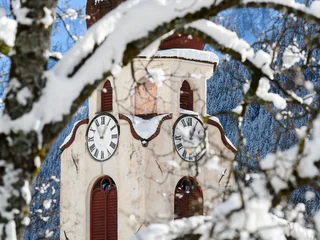
1/3
Church "St. Karpophorus"
Tarres/Tarsch, Latsch/Laces, Vinschgau/Val Venosta

1/3
Tarres/Tarsch, Latsch/Laces, Vinschgau/Val Venosta

San Pancrazio/St. Pankraz, St.Pankraz/San Pancrazio, Meran/Merano and environs

1/2
Nova Levante/Welschnofen, Welschnofen/Nova Levante, Dolomites Region Eggental

1/2
S. Martino/St. Martin - S.Lorenzo/St. Lorenzen, St.Lorenzen/San Lorenzo di Sebato, Dolomites Region Kronplatz/Plan de Corones

1/3
Glorenza/Glurns, Glurns/Glorenza, Vinschgau/Val Venosta

1/4
Bressanone dintorni/Brixen Umland, Brixen/Bressanone, Brixen/Bressanone and environs

Sesto/Sexten, Sexten/Sesto, Dolomites Region 3 Zinnen

1/2
Meltina/Mölten, Mölten/Meltina, Bolzano/Bozen and environs

1/3
Issengo/Issing, Pfalzen/Falzes, Dolomites Region Kronplatz/Plan de Corones

1/2
La Val/La Val, La Val, Dolomites Region Alta Badia

Lazfons/Latzfons, Klausen/Chiusa, Brixen/Bressanone and environs

S. Pietro/St. Peter - Laion/Lajen, Lajen/Laion

1/2
Meltina/Mölten, Mölten/Meltina, Bolzano/Bozen and environs

Albion/Albions, Lajen/Laion

1/4
Sesto/Sexten, Sexten/Sesto, Dolomites Region 3 Zinnen

Egna/Neumarkt, Neumarkt/Egna, Alto Adige Wine Road

S.Benedetto/Nauders, Rodeneck/Rodengo, Brixen/Bressanone and environs

1/2
Vadena/Pfatten, Bolzano/Bozen and environs

1/3
Schernag/Schernag, Tisens/Tesimo, Meran/Merano and environs

Merano/Meran, Meran/Merano, Meran/Merano and environs

San Pancrazio/St. Pankraz, St.Pankraz/San Pancrazio, Meran/Merano and environs

Fundres/Pfunders, Vintl/Vandoies, Brixen/Bressanone and environs

Villandro/Villanders, Villanders/Villandro, Brixen/Bressanone and environs

Ciardes/Tschars, Kastelbell-Tschars/Castelbello-Ciardes, Vinschgau/Val Venosta

1/2
Avelengo Paese/Hafling Dorf, Hafling/Avelengo, Meran/Merano and environs

Caerna/Garn, Klausen/Chiusa, Brixen/Bressanone and environs

1/2
Nalles/Nals, Nals/Nalles, Meran/Merano and environs

1/6
Colma/Kollmann, Barbian/Barbiano, Brixen/Bressanone and environs

Ora/Auer, Auer/Ora, Alto Adige Wine Road

Sesto/Sexten, Sexten/Sesto, Dolomites Region 3 Zinnen